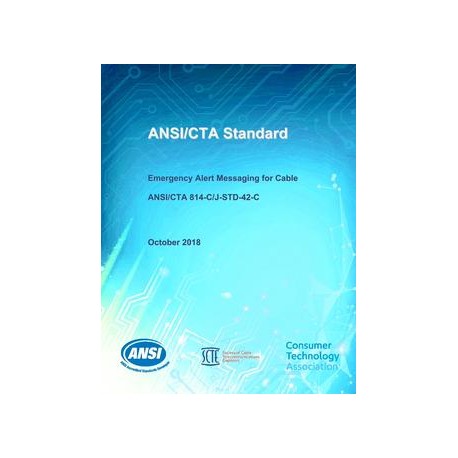More info
Full Description
This standard defines an Emergency Alert signaling method for use by cable TV systems in the UnitedStates to signal emergencies to digital receiving devices that are offered for retail sale. Such devicesinclude digital set-top boxes that are sold to consumers at retail, digital TV receivers, and digital videorecorders.The Emergency Alert signaling (EAS) scheme defined in this standard allows a cable operator todisseminate emergency alert information related to state and local-level emergencies and warnings inan efficient way, while minimizing disruption to programming. While it is possible for a cable operator tocomply with EAS requirements by simply replacing the source signal for all programs with an emergencyinformation channel, such switching is disruptive to viewing, is overly intrusive for many kinds of localwarnings and is overly-complex for the cable operator to implement in a digital cable environmentwhere each transport stream may carry many programs that would have to be individually interrupted.Based on the priority level of the alert, the Emergency Alert message may instruct the receiving deviceto force-tune to a designated emergency broadcast channel.Section 5 of this standard defines the syntax of the Emergency Alert message and related descriptors.This message is in the form of a standard MPEG-2 table and, when necessary, is delivered in-band oncable transport streams that carry one or more programs in-the-clear. Receiving devices without PointOf Deployment (POD)
1 modules in place process such messages in accordance with requirements described in Section 7 of this standard. For programs that are scrambled on a cable system, the Emergency Alert message is delivered to the POD module using the cable system's forward datachannel. The POD module processes the message as necessary and delivers it to the receiving deviceout-of-band. As used in this standard, "out-of-band" refers to the Extended Channel interface defined inANSI/SCTE 28 [4]. As delivered to the receiving device by the POD module, the Emergency Alert messageis in the form of an MPEG-2 table as defined in Section 5 of this standard. The receiving device thenprocesses the message in accordance with Section 7 of this standard.The behavior of receiving devices in response to user actions, such as channel changes or accessing on-screen displays, where such user actions relate to acquisition and processing of Emergency Alertmessages, is out of scope of this standard.
 View larger
View larger  View larger
View larger 
